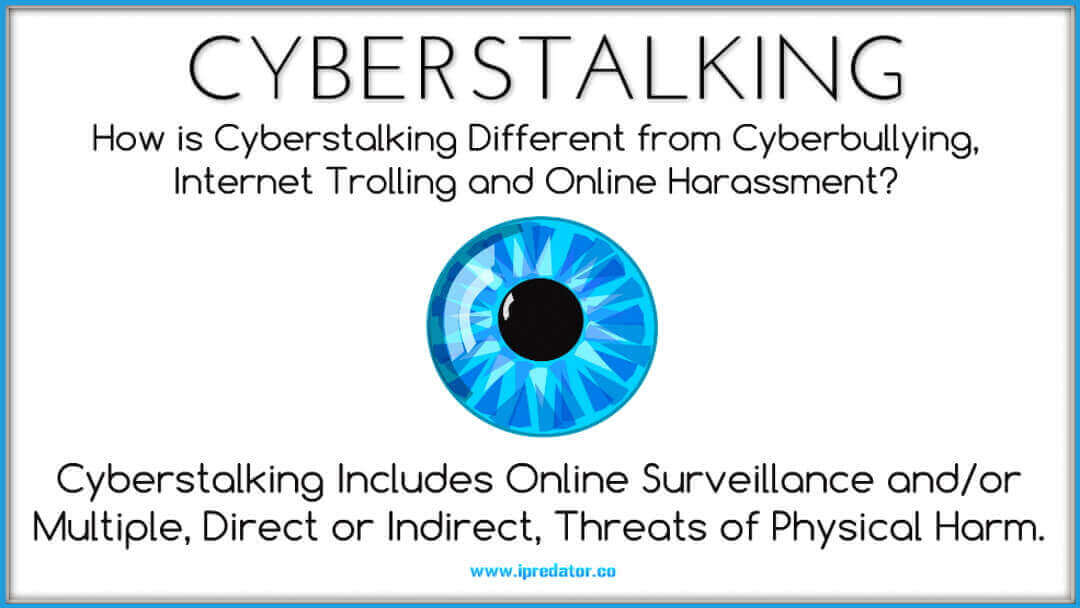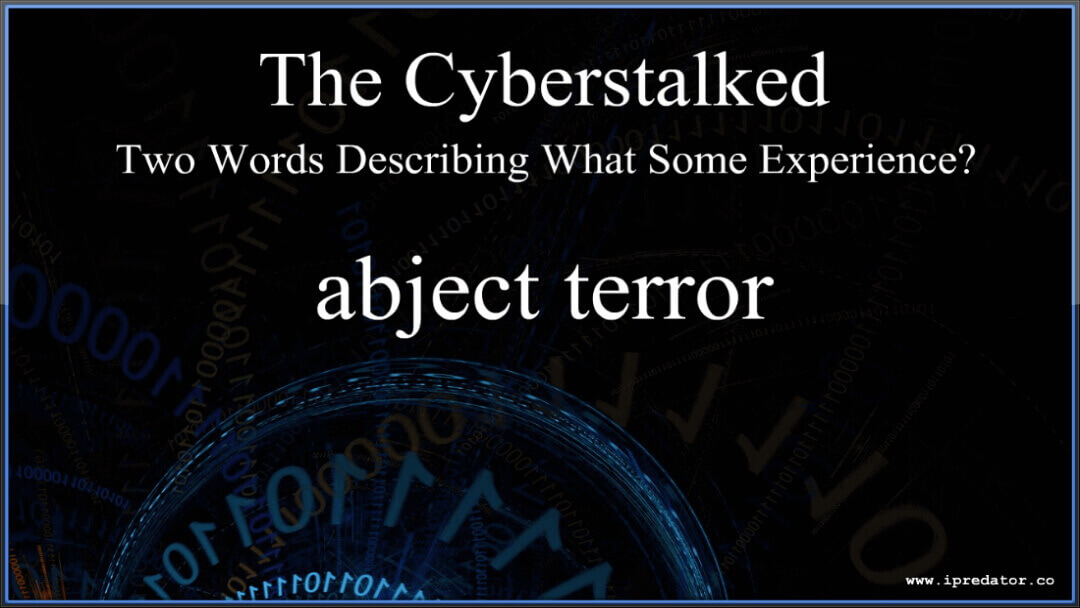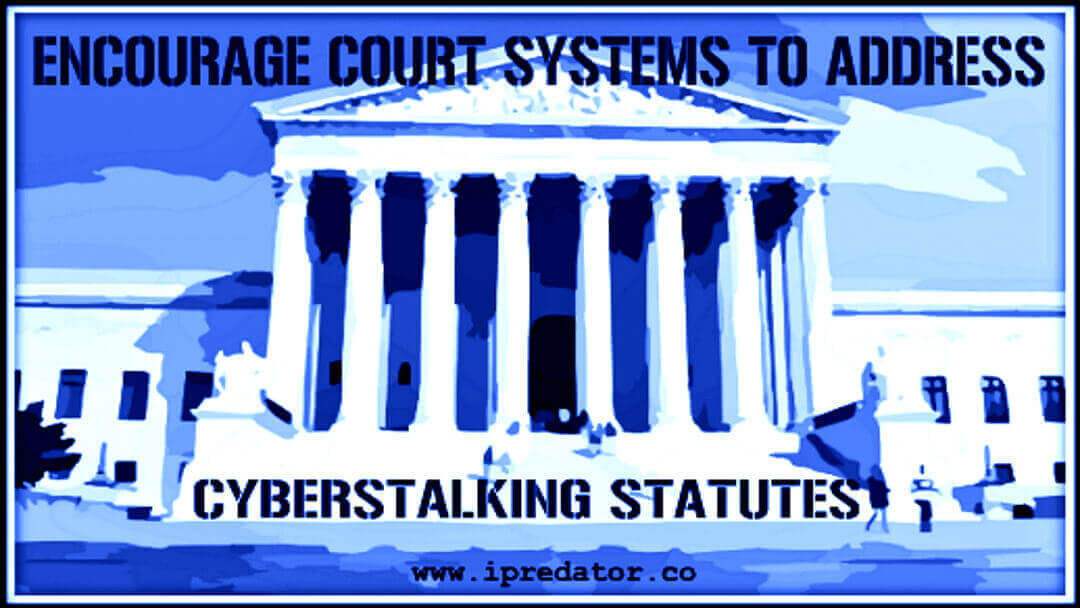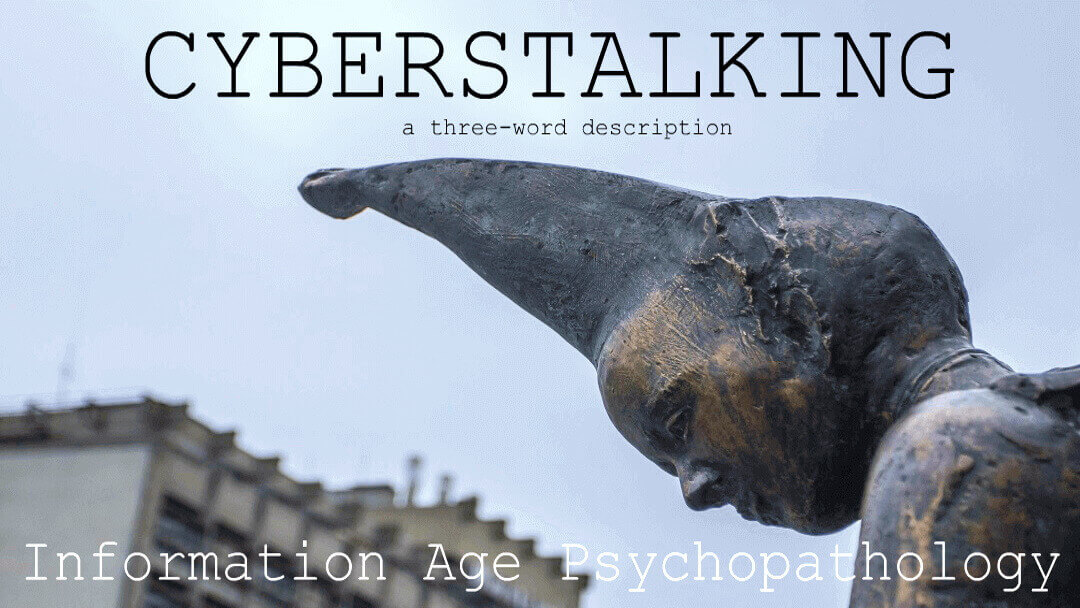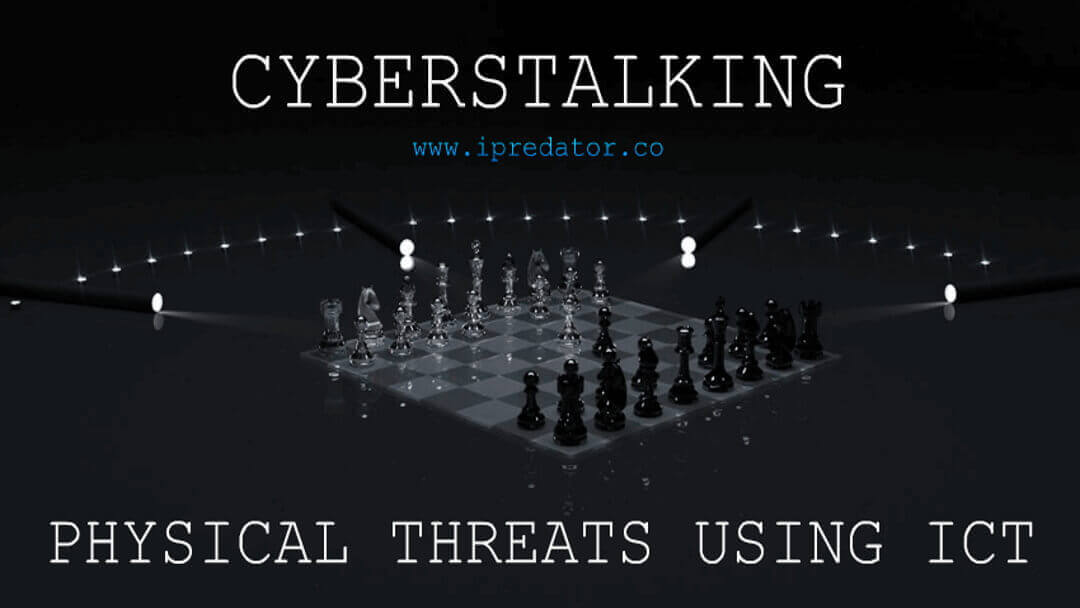20 Free Cyberstalking Images
by
Michael Nuccitelli, Psy.D.
Part 5
Part 5: Provided below are 20 free cyber stalking themed educational and awareness images created by this writer, Michael Nuccitelli, Psy.D. They are JPEG files and either 1080×1080, 1080×1350 or 1080×608. These images are optimal for Instagram or can be edited to different sizes. Dr. Nuccitelli’s images are available for direct download, free and public domain. Edit them as you wish and no attribution to this writer is required. To download, simply right click the image and “save as” or from your context menu. Over the next 3-4 months, Dr. Nuccitelli will be publishing many more blog posts making all his iPredator themed images available to download. Lastly, pasted below are links to his 26 free online safety themed checklists and inventories.
Cyberstalking: Cyberstalking is the use of Information and Communications Technology (ICT) to stalk, control, manipulate or habitually threaten a child, adult, business or group. Cyber stalking is both a tactic used by an online aggressor and typology of pathological ICT user (aka, Cyberstalker). Cyber stalking tactics include false accusations, threats of harm, digital monitoring, online surveillance, implied threats, identity theft and gathering information to manipulate and control the target. Cyberstalkers want to frighten you or threaten your safety is you do not acquiesce to their demands.
To meet the criteria of cyber stalking, the information and tactics used must involve a credible or implied physical and psychological threat to the target. An example of physical threat involves bodily harm to the target or their loved ones using ICT. Examples of psychological threats involve using internet defamation, humiliation, disinformation dissemination, character assassination and damage to the target’s reputation if they target does not acquiesce to the cyberstalker’s demands. If not addressed, cyber stalking will continue to devastate online users as the Information Age evolves.
iPredator Definition
iPredator: a person, group, or nation who, directly or indirectly, engages in exploitation, victimization, coercion, stalking, theft, or disparagement of others using Information and Communications Technology (ICT). iPredators are driven by deviant fantasies, desires for power, control, and retribution, religious fanaticism, political reprisal, psychiatric illness, perceptual distortions, peer acceptance, or personal and financial gain. iPredators can be any age or gender and are not bound by economic status, race, religion, or national heritage. Their sole requirement to get started in this dark dimension is an internet connection.
Central to the concept is the premise that information age criminals, deviants, and the violently disturbed are psychopathological classifications new to humanity. Whether the offender is a cyberbully, cyberstalker, cyber harasser, cybercriminal, online sexual predator, cyber terrorist, internet troll, online child pornography consumer/distributor, or a person engaged in internet defamation or nefarious online deception, they fall within the scope of iPredator. The three criteria used to define an iPredator include:
- A self-awareness of causing harm to others, directly or indirectly, using ICT.
- The usage of ICT to obtain, tamper with, exchange and deliver harmful information.
- A general understanding of cyberstealth used to engage in criminal or deviant activities or to profile, locate, stalk, and engage a target.
Unlike human predators prior to the information age, iPredators rely on the multitude of benefits offered by ICT. The primary differentiators of this very modern kind of predation are also threefold: the unlimited distance over which data can be conveyed, the immediacy with which the data can be conveyed, and the unlimited scope of data that can be conveyed. The importance of these three vectors of capability cannot be overstated. In pre-information age societies, by contrast, a predator’s malicious activity was local, slow-moving, and technologically constrained; the predator was limited to the area he could cover by car, to use an emblematic example, needed careful wooing or “casing” of his victim, and was restricted by the limitations of crude technologies like the telephone.
In the abstract and artificial electronic universe known as cyberspace, none of these restrictive qualifiers obtain. Furthermore, there is a fourth advantage that ICT offers iPredators: anonymity. On the internet it is easy for iPredators to actively design online profiles and diversionary tactics to remain undetected and untraceable.
IPREDATOR INVENTORY LINKS
- iPredator Probability Inventory – 330 (IPI-330)
- iPredator Probability Inventory – Adult (IPI-A)
- iPredator Probability Inventory – Business (IPI-B)
- iPredator Probability Inventory – Cyberbully (IPI-CB)
- iPredator Probability Inventory – Cyberbully Abuser (IPI-CBA)
- iPredator Probability Inventory – Cybercrime (IPI-C)
- iPredator Probability Inventory – Cyberstalking (IPI-CS)
- iPredator Probability Inventory – Educator (IPI-E)
- iPredator Probability Inventory – Internet Predator (IPI-IP)
- iPredator Probability Inventory – Pediatric (IPI-P)
- iPredator Probability Inventory – Psychologist (IPI-PSY)
- iPredator Probability Inventory – Teen (IPI-T)
IPREDATOR CHECKLIST LINKS
- Adult Internet Safety Checklist (AISC)
- Business Internet Safety Checklist (BISC)
- Cyberbully Abuser Checklist (CBAC)
- Cyberbullying Target Checklist (CBTC)
- Cybercrime Protection Checklist (CCPC)
- Cyberstalker Identification Interview (CSII)
- Cyberstalking Prevention Checklist (CSPC)
- Digital Reputation Protection Checklist (DRPC)
- Educator Internet Safety Checklist (EISC)
- Internet Safety Checklist Psychologist (ISCP)
- Online Predator Prevention Checklist (OPPC)
- Parent Cyber Safety Checklist (PCSC)
- Pediatric Internet Safety Checklist (PISC)
- Teen Internet Safety Checklist (TISC)
Cyberstalking Images Blog Post Links
- Cyberstalking Images 1
- Cyberstalking Images 2
- Cyberstalking Images 3
- Cyberstalking Images 4
- Cyberstalking Images 5
Michael Nuccitelli, Psy.D.
Michael Nuccitelli, Psy.D. is a NYS licensed psychologist, cyberpsychology researcher and online safety educator. In 2009, Dr. Nuccitelli finalized his dark side of cyberspace concept called iPredator. Since 2010, he has advised those seeking information about cyberbullying, cyberstalking, cybercriminal minds, internet addiction and his Dark Psychology concept. By day Dr. Nuccitelli is a practicing psychologist, clinical supervisor and owner of MN Psychological Services, PLLC. After work and on the weekends, he volunteers helping online users who have been cyber-attacked. Dr. Nuccitelli’s is always available to interested parties and the media at no cost. This website and everything created by Dr. Nuccitelli is educational, free and public domain.






